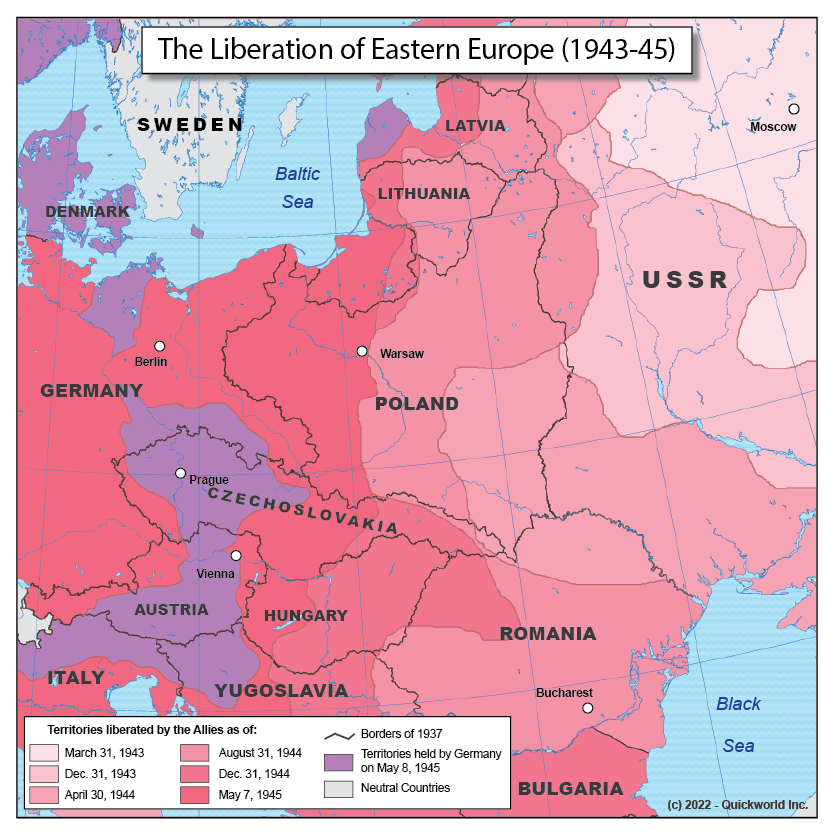The liberation of Eastern European territories from Nazi occupations started at Stalingrad in January 1943. By then, the German army had spent so much resources and overstretched itself to such an extent that the retreat would not stop for over two years, until the Soviets took Berlin in April 1945.
This map shows the various stages of the advances of the Red Army. Unlike the liberation of Western Europe which was relatively brief -- less than a year separated D Day from VE Day, the Soviet advance took over two years and covered much larger territory. It was also much deadlier, as the Soviets aligned up to 6 million soldiers, combat was extremely intense, both sides committed war crimes on civilian populations, and prisoners of war were treated under inhumane conditions.
While most of the Soviet territory had been regained by the Spring of 1944, the Summer and Fall of 1944 campaign saw major gains in Eastern Poland, Czechoslovakia and Romania, reaching the East bank of the Vistula near Warsaw. The Spring of 1945 saw the total collapse of the German Army and the Soviet troops met with the American army on the River Elbe on April 25, Berlin fell on April 1945 and Germany accepted full surrender on May 8, 1945.
The Eastern Front in 1944


